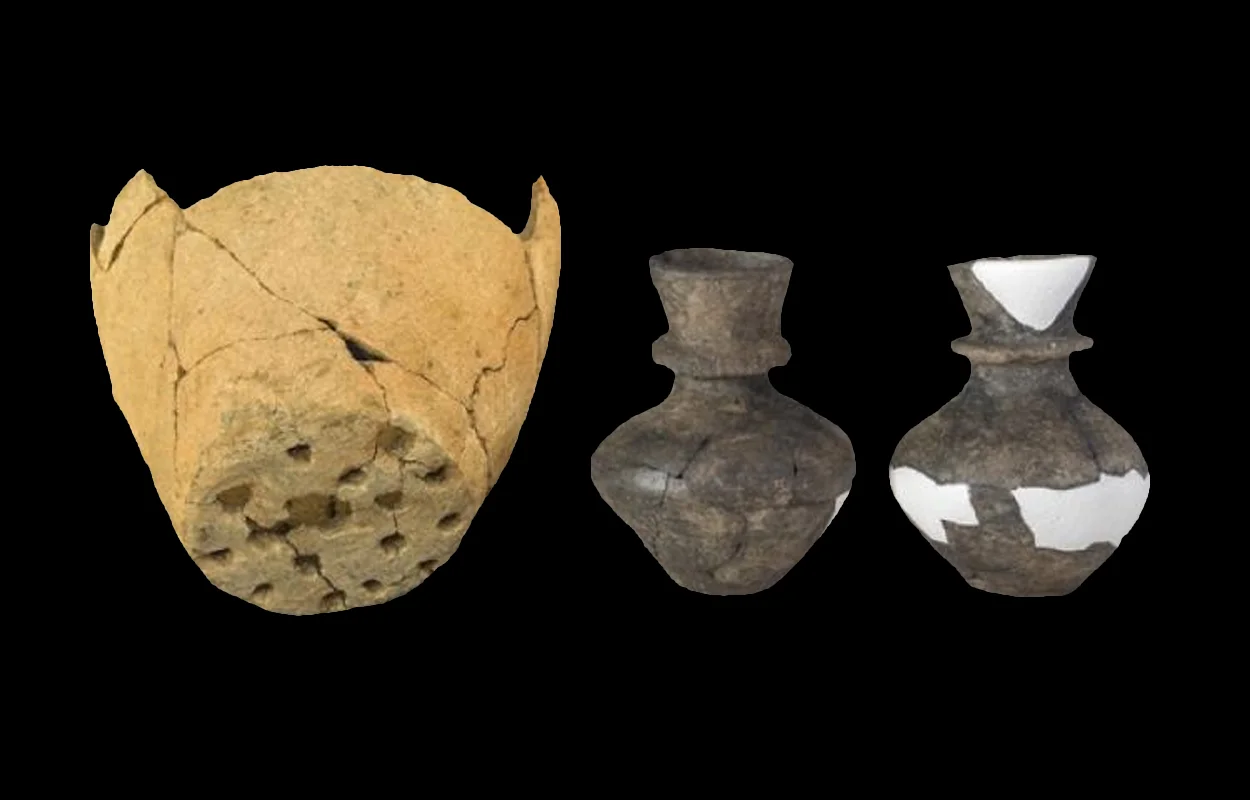According to a recent study, milk from cows, goats, and sheep was processed by Neolithic farmers.
A study published in the Royal Society Open Science has confirmed that Neolithic farmers in what is now Poland produced dairy products using milk from different animals such as cows, sheep, and goats. This conclusion was drawn from an analysis of residues found in clay vessels discovered in the Kujawy-Pomerania Province.
Dr. Harry Robson from the Department of Archaeology at the University of York said: “These results contribute significantly to our understanding of the use of dairy products by some of the earliest farmers of Central Europe.
“Whilst previous research has shown that dairy products were widely available in some European regions during this period, here, for the first time, we have clear evidence for a diversified dairy herd, including cattle, sheep and goats, from the analysis of ceramics.”
In 2016, while conducting rescue excavations in the vicinity of the village of Sławęcinek (Kujawy-Pomerania), archaeologists discovered ceramic vessels in a Late Neolithic layer (approximately 3650-3100 years ago). The excavation also revealed traces of a small settlement that included four houses, wells, and burial sites.
To investigate the vessels and the deposits on their surface, the researchers utilized a multi-stranded proteomic and lipid-analysis. By comparing proteomic data, it is possible to directly identify cheesemaking and other dairy processing methods that enrich curds by examining the proportion of curd proteins.
Lead author of the study, Miranda Evans from the Department of Archaeology at Cambridge said: “Proteomic results showed that the ancient residues (from vessels – PAP) closely resembled both the modern cheesemaking residues and cheese itself and not whole milk. This reveals that the people of Sławęcinek practised cheesemaking or another form of curd-enriching dairy processing.”
Further evidence of multiple species used for cheesemaking was the presence of both cow and sheep or goat bones on the archaeological site.
During the Neolithic period, lactose intolerance was prevalent, affecting nearly all inhabitants of Europe. It wasn’t until the Late Bronze Age when a genetic mutation became widespread, allowing adults to produce lactase, the enzyme responsible for breaking down lactose in the body. At the same time, cattle farmers discovered techniques to reduce the lactose content in milk through methods such as cheese-making or yogurt production.
Evidence for the consumption of dairy products includes the remains of vessels with ‘milk residues’ preserved from those times in various regions. A similar argument are dairy proteins found in the dental plaque of Neolithic humans. There are also bones of cattle with kill patterns expected for dairy animals.
There is mounting archaeological evidence indicating that milk consumption has been a practice in Central Europe dating back to the Neolithic era. Fat particles characteristic of dairy products were discovered on ceramic vessels unearthed in modern-day Poland and Hungary, estimated to be from the 6th millennium BC. Furthermore, traces of cheese production dating back over 7,000 years have been identified on vessels excavated in Kujawy.
Header Image Credit : University of York







